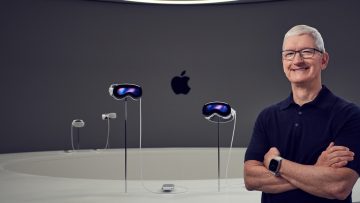The new MacBook Pro was a “courageous” decision for Apple in a bunch of different ways: only USB-C ports, that Touch Bar, killing off MagSafe. But all of those decisions have valid (if small) design benefits for Apple, so we’ll let them stand.
One thing that’s difficult to explain away is the Pro’s lack of graphical power. For a laptop that’s supposed to be aimed at creative professionals — the people who made Macs desirable in the first place — the Pro is woefully inadequate for video editing, photographers, or anyone who needs more than a glorified netbook.
DON’T MISS: A 75-year-old’s excellent Tweet may be the only good thing in 2016
Yes, integrating a graphics card means more weight, more cost, and a shorter battery life. But that’s not what we’re talking about here. There is another way, thanks to the USB-C ports Apple decided to litter across its latest and greatest laptop.
With a lot of trickery, some users and tech blogs have managed to get an external GPU designed for Windows laptops running on a MacBook Pro. Because of the tremendous speed and throughput of USB-C ports, it’s very feasible to hook up an external graphics card to the MacBook Pro when you’re at your desk, and use that for the heavy lifting.
As an added side benefit, a GPU enclosure can also include a bunch more ports, including Ethernet, SD card readers, and USB-A ports — all things that people have complained are missing on the new MacBook Pro.
It sounds like the perfect solution: portability and battery power when you’re on the move, true desktop-class practicality and performance when you’re tethered to a desk.
It would be the perfect solution, except for one tiny detail: Apple doesn’t want it to happen. The company has refused to make an external GPU enclosure for MacBooks, and using a Windows one requires some hardcore tinkering. To get a Razer Core running with the new MacBook Pro, AppleInsider detailed a real tale of woe:
“Getting an external GPU to work in macOS requires system integrity protection (SIP) to be disabled through the terminal. Then, a hack must be installed allowing for the Apple-laid block on some Thunderbolt 3 peripherals to be bypassed.
Third, a DSDT system file needs to be edited, allowing for the functionality. Then, a script has to be run for graphic card identification, and even after all that, drivers may need to be installed.
Then, there’s compatibility issues that may have to be dealt with. The closer a GPU is to the “reference design” or manufacturer’s standard, the better the results.”
Imagine if Apple put some of its talented engineers towards designing a custom GPU for MacBooks. Sure, it would have the GPU built in, and it’d probably cost somewhere around $800 for a graphics card that’s $300 in stores. But considering people are spending easily upwards of $2,000 on the MacBook Pros (plus an extra $250 in dongles), it’s really not that much of an ask.










